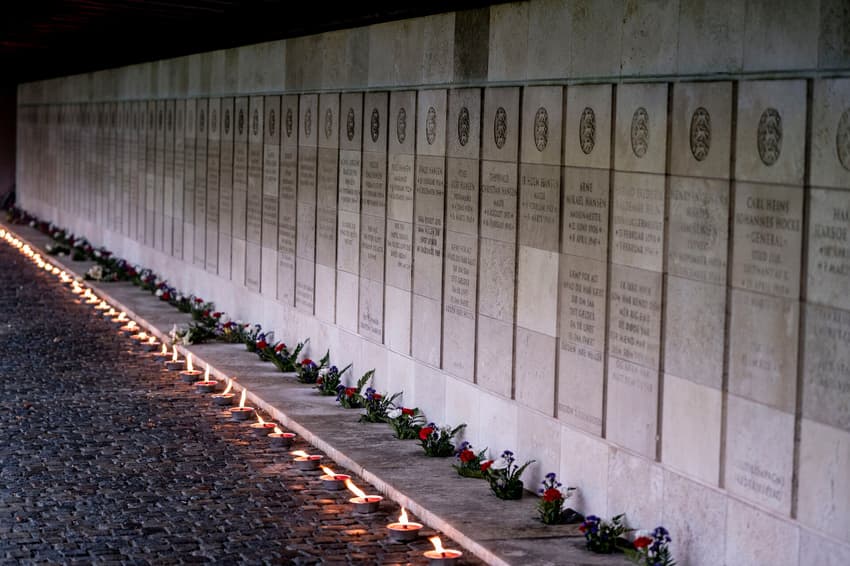Mystery of guard who was buried with resistance heroes at Danish WWII memorial

A grave has been removed from the Mindelund memorial park for Danes who were active in the World War II resistance movement, after evidence emerged that the person buried there worked as a guard for the occupying Germans.
The grave of Karl Edvard Nielsen stood for decades alongside people considered heroes of Denmark’s WWII resistance movement at Mindelund, a memorial cemetery for people who participated in the resistance against the German occupation from 1940-1945.
New information has proven that Nielsen, far from being part of the resistance movement, was a guard for occupying Nazi Germany.
The Danish Ministry of Ecclesiastical Affairs has therefore decided to remove the grave in question, Mindelund said in an update on its website.
The decision comes after the publication of a book, Den falske løjtnant (“The False Lieutenant”) by author Martin Q. Magnussen, which questioned Nielsen’s status as a resistance fighter.
The book states that he was accidentally executed by the Gestapo, the Nazi secret police, and that his wife claimed compensation from the German authorities.
Magnussen said the decision to remove the gravestone had been the correct one.
READ ALSO:
- Denmark gives WWII resistance fighters extra cash reward
- How do young people in Denmark view the Second World War?
- Thousands download newly-published list of Danish WWII Nazis
“It’s completely crazy but it’s the right decision even though it’s controversial,” Magnussen said.
“You can’t have a person who was a sabotage guard next to ‘Flammen’ and ‘Citronen’,” he said, referencing the code names of Denmark’s most famous resistance operatives.
Mindelunden is located in the suburb of Hellerup near Copenhagen and is visited by many on May 4th, the day Danes mark liberation from the German occupation at the end of WW2.
The location has a bloody history, having been used by the German occupying forces to execute and bury captured resistance fighters. After the war, it was turned into a memorial for people who died in the Danish resistance.
The information collected by Magnussen for his book has been reviewed by the National Museum of Denmark.
The museum could not document Nielsen’s involvement with the resistance and evidence suggests that Magnussen’s conclusion is correct, according to Mindelunden.
“The stone will be removed in any case, but we don’t know yet whether anything more will happen,” the memorial’s manager Anna Wagn told broadsheet newspaper Weekendavisen.
Comments
See Also
The grave of Karl Edvard Nielsen stood for decades alongside people considered heroes of Denmark’s WWII resistance movement at Mindelund, a memorial cemetery for people who participated in the resistance against the German occupation from 1940-1945.
New information has proven that Nielsen, far from being part of the resistance movement, was a guard for occupying Nazi Germany.
The Danish Ministry of Ecclesiastical Affairs has therefore decided to remove the grave in question, Mindelund said in an update on its website.
The decision comes after the publication of a book, Den falske løjtnant (“The False Lieutenant”) by author Martin Q. Magnussen, which questioned Nielsen’s status as a resistance fighter.
The book states that he was accidentally executed by the Gestapo, the Nazi secret police, and that his wife claimed compensation from the German authorities.
Magnussen said the decision to remove the gravestone had been the correct one.
READ ALSO:
- Denmark gives WWII resistance fighters extra cash reward
- How do young people in Denmark view the Second World War?
- Thousands download newly-published list of Danish WWII Nazis
“It’s completely crazy but it’s the right decision even though it’s controversial,” Magnussen said.
“You can’t have a person who was a sabotage guard next to ‘Flammen’ and ‘Citronen’,” he said, referencing the code names of Denmark’s most famous resistance operatives.
Mindelunden is located in the suburb of Hellerup near Copenhagen and is visited by many on May 4th, the day Danes mark liberation from the German occupation at the end of WW2.
The location has a bloody history, having been used by the German occupying forces to execute and bury captured resistance fighters. After the war, it was turned into a memorial for people who died in the Danish resistance.
The information collected by Magnussen for his book has been reviewed by the National Museum of Denmark.
The museum could not document Nielsen’s involvement with the resistance and evidence suggests that Magnussen’s conclusion is correct, according to Mindelunden.
“The stone will be removed in any case, but we don’t know yet whether anything more will happen,” the memorial’s manager Anna Wagn told broadsheet newspaper Weekendavisen.
Join the conversation in our comments section below. Share your own views and experience and if you have a question or suggestion for our journalists then email us at [email protected].
Please keep comments civil, constructive and on topic – and make sure to read our terms of use before getting involved.
Please log in here to leave a comment.